- Home
- Jerry Spinelli
Knots in My Yo-Yo String
Knots in My Yo-Yo String Read online
THIS IS A BORZOI BOOK PUBLISHED BY ALFRED A. KNOPF.
Copyright © 1998 by Jerry Spinelli
Map copyright © 1998 by Jennifer Pavlovitz
Cover photograph copyright © 1998 by Penny Gentieu
All rights reserved under International and Pan-American Copyright Conventions. Published in the United States by Alfred A. Knopf, a division of Random House, Inc., New York, and simultaneously in Canada by Random House of Canada Limited, Toronto. Distributed by Random House, Inc., New York.
Grateful acknowledgment is made to Sidney Lippman for permission to reprint excerpts from “Too Young,” copyright © 1951 by Aria Music, Sylvia Dee, and Sidney Lippman.
Photographic acknowledgments: this page: Norristown Herald, copyright © 1947; this page (right): Chuck Cully.
www.randomhouse.com/kids/
Library of Congress Cataloging-in-Publication Data Spinelli, Jerry.
Knots in my yo-yo string: the autobiography of a kid / by Jerry Spinelli.
p. cm.
Summary: This Italian-American Newbery Medalist presents a humorous
account of his childhood and youth in Norristown, Pennsylvania.
1. Spinelli, Jerry—Childhood and youth—Juvenile literature. 2. Authors,
American—20th century—Biography—Juvenile literature. 3. Norristown (Pa.)—Social
life and customs—Juvenile literature. 4. Italian Americans—Pennsylvania—Norristown—
Biography—Juvenile literature.
[1. Spinelli, Jerry—Childhood and youth. 2. Authors, American.
3. Italian Americans.] I. Title.
PS3569.P546Z47 1998
813′.54—dc21 97-30827
eISBN: 978-0-307-48685-1
v3.1_r2
This book is dedicated to
Kathrine Kressmann Taylor
and to
my Gregory’s Running Team mates:
Roger Adelman
Bill Glazier
Bob Hopple
and to
Louis Darden
wherever you are
Acknowledgments
To write this book about myself I needed more help than for any other. Considering the clarity of his memory, I think my old friend Roger Adelman ought to try his own hand at this. Contributions from my brother, Bill, and my mother were invaluable. What the three of us could not personally recall, I usually found in my father’s meticulously compiled scrapbooks. Of great assistance also were Pete and Tina Pennock, Joe Mesi, Bill Steinberg, Millie Vircsik, Regina Simmonds, Ruth Riley, Bernice Foley, Carl Francis, Sandi Robinson, Judy Bitto, Larry Walker, Ellen Adams, my first editor John Keller, my agent and friend Ray Lincoln, and, as always, my wife, Eileen.
And Bill Hemsing, rifle-armed outfielder who stopped the ground balls that I missed and who hits the curve ball today better than ever.
For any inaccuracies contained in this account, I apologize. Where history could not be confirmed, it trembled at the mercy of my imperfect if well-meaning memory.
Contents
Cover
Title Page
Copyright
Dedication
Acknowledgments
Map
Johnson Highway
East End
West End
War
Lash La Rue
Ashes in the Grass
Never the Monkey
Shortstop
Good Boy
George Street
Mrs. Seeton’s Whistle
Night
A Family Thing
Big Brother
Sixteen Things I Wished I Could Do
A Swooner in Sneakers
A Little Stiff from Swimming
Staying in the Lines
Dr. Winters’ Finger
God and Garfield Shainline
Girls
When I Was King
Johnson Highway
Fargo, North Dakota
Other Books by This Author
About the Author
Johnson
Highway
Like much of my life until that sixteenth year, it was a sunny day. A Sunday afternoon. I was in Carol Eckert’s house on Pine Street. We were in the living room. Carol was telling me about her new boyfriend, and I, as always, was the good listener.
The doorbell rang. It was my younger brother, Bill, panting. “Lucky was hit by a car!”
Lucky was our dog.
I didn’t know what to say except, “Where?”
“Johnson Highway.”
I apologized to Carol and left with Bill. We ran. We ran down Pine to Roberts, down Roberts to Locust, and up Locust toward Johnson Highway. As we came near, I wanted to say to Bill, “You look. I’m not stopping.” I wanted to cross Johnson Highway and not look down but run on, run out of town, out of time, out of myself, because I was having a bad year, and it was too few hours ago that I was king.
East
End
I am outside in the yard. There is the smell—sour, vaguely rotten. And then the sound. It is high-pitched, but that is not the problem. The radio makes high-pitched sounds, too, and so does my mother when she sings to me. The problem is the loudness, a force as feelable as a blizzard. Every morsel of me shrivels and shakes. And even so, maybe I could stand it if only it would stop. But it does not and does not—and I cannot hear my own scream. My mother is running out to get me …
This is my first memory of my first house. It was on Marshall Street in the so-called East End of Norristown, Pennsylvania. Behind the house was a brewery—the Adam Scheidt Brewing Company—and that, I later learned, was where the smell and the sound came from.
The smell was hops, used in the beer-brewing process. Forming a constant cloud about us, the odor was especially strong once a day when a horse-drawn wagon hauled spent mash down the alley that led from the brewery past our side yard. Then the alley became a sour, steaming stream from the drippings of the wagon’s sopping cargo.
The source of the sound was an air-raid siren. It was propped on the roof of the brewery, hardly a stone’s throw from our house. This was during the early 1940s. World War II was raging in Europe, Africa, and Asia, and air-raid drills were a common practice in towns and cities throughout the land.
While the siren’s frightful wail seemed to come from everywhere, another frequent sound—a long, low drone—came from directly overhead. Many a day I looked up to see planes or airships—dozens, sometimes hundreds of them—moving in neat geometric shapes across the sky.
Our house was red brick, flanking a block-long row of red-brick houses that ended at the brewer’s alley. The sidewalk was brick also. We lived in an apartment on the second floor. The Printzes—Mickey, Big Leroy, and Little Leroy—lived on the first floor. And on the third. Each night they trooped through our quarters to go up to bed.
The landlady lived in the adjoining house. Neighborhood kids said she was mean. Stray balls that landed in her yard never came out. Luckily for my father’s baseball budget, she was nice to us. My father lobbed underhand pitches to me, and I regularly whacked them over the back fence into the landlady’s yard. My father, according to Marshall Street lore, was the only person ever to return alive from her yard, ball in hand.
Unable to find a bat for a four-year-old, my father bought a standard-size Louisville Slugger, then put the saw to it. He presented me with seventeen inches of hickory handle—perfect. That stunted, clubbish “bat” stands in a corner of my office today. It reminds me of how small I once was, and that the landlady’s fence was both the first and last fence that I ever hit a baseball over.
A budding ballplayer (age 4, 1945).
Over the fence out front, I sent something else. The gate facing th
e sidewalk was metal, and I used to grip those bars with my tiny hands and plant my feet and belt out “Jesus Loves Me” to the turning, smiling passersby.
At some point during my brief singing phase, I acquired a baby brother, Billy. My mother tells me that because I then had to compete for her attention, I brought my performances inside to the living room and kitchen.
* * *
The next house we lived in we had all to ourselves. It was also a row house, but it had a front porch. It was deeper into the East End, on Chestnut Street. I always remember the number—224 Chestnut—because my grandparents lived at 226, the house next door.
I wasn’t allowed to cross the street. But I did roam up and down the sidewalk, and that led me to the vacant lot at the end of our row of houses. When I think of that lot, I think of weeds and of brown and blue broken glass. It became my first playground, my first ballfield. Many of my days were spent there, until I began school.
I did not go to kindergarten, so my first taste of school was first grade at Gotwals Elementary. We learned to write the letters of the alphabet, then our names. I recall laboring over each pencil-printed letter, and the miracle of completing my name on the blue-lined paper: my first written work.
I was destined to learn little else at Gotwals. We rented our house on Chestnut Street, but my parents had been searching for a place to buy. When they got the chance, they took it, even though it meant transferring me to a new first grade in a new school.
We were moving to the West End.
West
End
The West End became more than my home and neighborhood. It became my New World. No coonskin pathfinder ever explored his patch of earth more thoroughly than I explored mine.
The address was 802 George Street, second house in from Elm. Another brick row house, another brick sidewalk. For ten years I would live there, from ages six to sixteen.
The 800 block was the last block on George Street. It was a dead end. Beyond the last house the asphalt stopped. A three-foot-high wooden barrier made it official. I learned that “dead end” meant two different things. To a grownup it meant Stop—Turn the Car Around. To me, a kid, it meant Go—Your Territory Starts Here. Before the wooden barrier was the structured, orderly world of grownups, the neat grid of streets and houses that gave shape to their lives. Civilization.
Past the barrier was frontier. Climb over the fence or simply walk around it, as a car could not, and you found yourself in knee-high weeds. Then came the railroad tracks, then the woods, then the creek (pronounced “crick” in Norristown). This swatch of undeveloped land featured not one but two dumps, plus a swamp, Red Hill, the spear field, the stone piles, and a black and white pony. Who needed playgrounds? And lucky me, the portal to this kid-size continent was the dead end of my new street named George.
I spent much of the next ten years in this houseless, streetless wilderness and in the park on the other side of the creek. Sometimes I was with others, sometimes alone. By the time the ten years were up, I had caught a handful of salamanders, hit a home run, raced against my stopwatch, searched for the Devil, kissed a girl, and bled from an attack of leeches.
But I did not go to sleep on the frontier side of the dead-end fence, or wake up there, or go to school there. And that was okay, because the civilized side also had something that seemed expressly made for me and my playmates, geographic features that appeared on no map, had no names, yet were intimately familiar to all kids in the neighborhood. Seen from above, they would appear as a second, nameless grid overlaid on the public one. I speak of alleyways.
To me and the neighborhood kids, the back of a house was more important than the front, and we happily roamed the alleyways that bordered our backyards. Alleys were sized to make us comfortable—with a running start, you could practically broad-jump across some of them. In an alley it was the car, not the kid, that was the intruder. Alleys were for sneakers and bikes and trikes and wagons.
Alleys had no rules, no signs. Danger and parental interference were minimal. You could lie on your back in the middle of an alley (if you wanted to) and close your eyes for five minutes and not be run over. You could hang the frame of an old wooden chair from a telephone pole spike and use it as a basketball rim. In an alley you could practice riding your new bike in peace, then ram it into potholes and get yourself thrown, like a bronco buster. You could check out other people’s garbage cans. If you wanted.
If you ran away from home, or planned to, you would go by alleyway. The network of nameless alleys mimicked the town’s official layout. You could go anywhere—for all I knew, clear across the country.
With the frontier and the park and the alleys available to us, you might think we would stay off the streets. We did not, of course. If it pleased us to get up a football game in the middle of the street or hide from seekers under parked cars, that’s what we did. Because, in truth, our territory was wherever we happened to be. Whichever side of the dead end we were on, whichever side of the door, we confiscated the turf and made it our own.
And so, if we felt like resting, we would alight like a small flock of birds onto the nearest front steps. Except for those at the house directly across the street from 802. For reasons too vague for words, we were afraid of the man who lived there. His front steps were never sat on, his sidewalk never hopscotched, his doorbell never rung, his backyard fence never climbed. The truth was, he was simply a widowed barber who preferred to keep his shades down all the time, but try telling that to us.
Ten years, from six to sixteen. Ten years in the West End. Ten years of twin Popsicles and Bonomo’s Turkish taffy, hightop Keds and a plaid cummerbund, Howdy Doody and Willie the Worm and Uncle Miltie on TV Tuesday nights, salamanders and snakes and candy cigarettes, coal dust on the clothesline, baseball cleats swinging from my handlebars, Ovaltine in my milk, knots in my yo-yo string.
War
I hate war. But when I was little, I loved it. War was a game, guns were toys, death an amusement ride. The first card game I ever played was called war.
I also played with little green soldiers, maybe two inches high. I loved their perfect, tiny helmets that reminded me of cereal bowls. Even the faces of the soldiers were perfect and green. Their tiny mouths and eyes were forever locked into a battlefield moment that I could only imagine.
I read G.I. Joe and Combat Kelly comic books. Then, down at the creek, I would poke a stick into the powdery bottom silt, pop it upward, and go “Boom!” I pretended the resulting brown underwater cloud was an atomic bomb explosion.
And of course, I played war with my friends. Beyond the dead end, there were two major arsenals: the stone piles and the spear field. The stone piles were on the other side of the tracks, between the main dump and the creek. There were five of them, each about ten feet high. The piles no doubt belonged to a construction company, but as far as we dead-end kids were concerned, they were there strictly in answer to our instinct to fling a stone.
Yet the one real stone battle I recall happened not there but at the creek (another inexhaustible source of stones; it wasn’t called Stony Creek for nothing). We divided ourselves into two platoons and took up positions on either side of the creek. We loaded up and fired away.
The creek at that point was hardly wider than an alleyway. Across the water Johnny Seeton was firing from behind a tree. I waited till he poked his head out. He was looking right at me. I fired. I was aiming to hit him in the eyebrow. This is not as malicious as it sounds, for we were only playing at war—we were pretending, and everybody knew you didn’t get hurt pretending. Besides, Johnny Seeton was one of my two best friends. And double-besides, who ever actually hit what they were aiming at?
The stone hit him in the eyebrow.
He screamed. He wouldn’t stop screaming. Blood streamed down his face. He galloped across the water, ignoring stepping stones, screamed up the creek bank, and screamed all the way home. As for me, pretend did not give way to horror instantly. For several seconds of fanciful confusio
n, as Johnny Seeton thrashed wildly past me, I felt surprised that our relationship as best friends did not seem to count in this matter, as if a stone thrown by me should hurt him less.
Neither Johnny nor his parents ever said anything to me about the incident. They didn’t have to. The two-week patch on Johnny’s eye punished me every day.
Spears were safer.
Go to the dead end, turn left, walk up the tracks past Red Hill and the other, smaller dump, climb the trackside bluff, and you were in the spear field—so named for the plants growing there. Strip one of them of its leaves, and you were left with a sturdy four-foot-high stalk straight as a pool cue. Pluck it from the ground, shake off the root dirt, and bring on the enemy.
As I passed through the grade-school years, war became less about machine-gun chatter and spectacular explosions and more about people.
I read about war, about the bodies of soldiers, even enemy soldiers, whose lifeless hands clutched photographs of loved ones back home.
I read of the torture of captive troops. I especially cringed over the fingernail torture, in which a pair of pliers pulled out the victim’s fingernails, slowly, one by one. Such things happened to spies and to people who knew too many secrets. I resolved that if I was ever in a war, I would be a dumb nonspy.
But I could not resolve not to be a soldier. Every passing day, every February 1—the date of my birth—prodded me closer to the ominous cloud that hung over my future. It was called the draft, and it meant that when I (and all other boys deemed healthy enough) got out of high school or college, I would have to join the armed forces whether I wanted to or not.
As if to prepare me, my daydreams placed me in grim wartime situations. I saw myself, apparently a failure at avoiding secrets, in the hands of enemy interrogators.
“Tell us,” they growl.
“Never,” I say firmly, for I am a good American soldier.
Then I feel the pliers grip the end of the nail on my right index finger, and cold sweat pours from me, and I feel the tug of the pliers and then the pain begins—and I sing. I sing like the Vienna Boys’ Choir. I empty my head like a box of cornflakes. I tell them everything from our deepest military secrets to my shoe size.

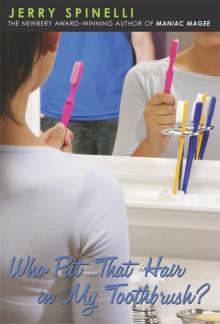 Who Put That Hair in My Toothbrush?
Who Put That Hair in My Toothbrush?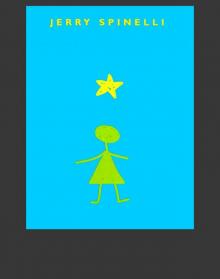 Stargirl
Stargirl Loser
Loser Jake and Lily
Jake and Lily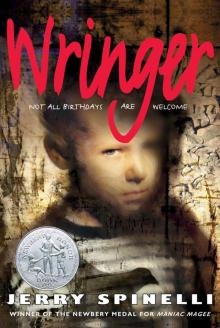 Wringer
Wringer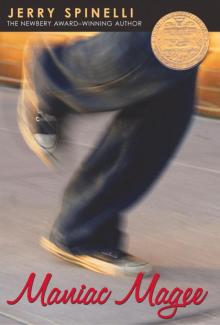 Maniac Magee
Maniac Magee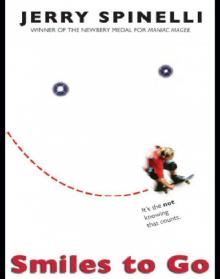 Smiles to Go
Smiles to Go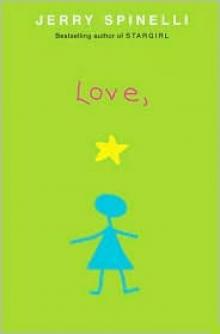 Love, Stargirl
Love, Stargirl Hokey Pokey
Hokey Pokey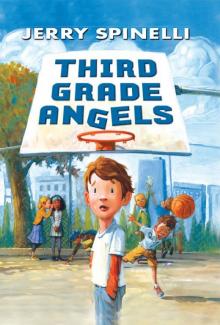 Third Grade Angels
Third Grade Angels Tooter Pepperday: A Tooter Tale
Tooter Pepperday: A Tooter Tale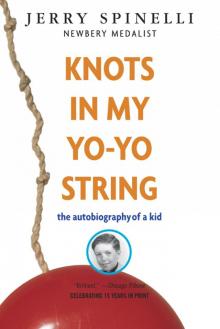 Knots in My Yo-Yo String Knots in My Yo-Yo String
Knots in My Yo-Yo String Knots in My Yo-Yo String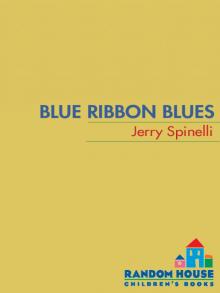 Blue Ribbon Blues: A Tooter Tale
Blue Ribbon Blues: A Tooter Tale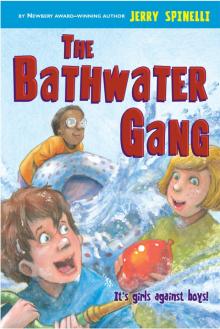 The Bathwater Gang
The Bathwater Gang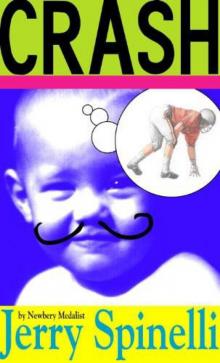 Crash
Crash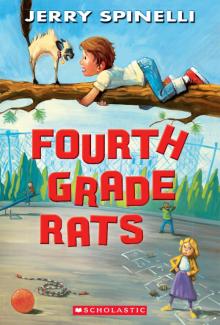 Fourth Grade Rats
Fourth Grade Rats Eggs
Eggs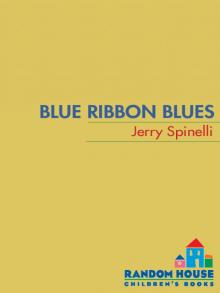 Blue Ribbon Blues
Blue Ribbon Blues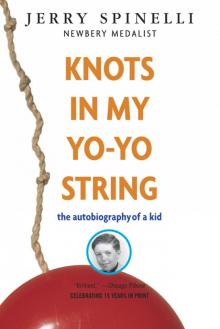 Knots in My Yo-Yo String
Knots in My Yo-Yo String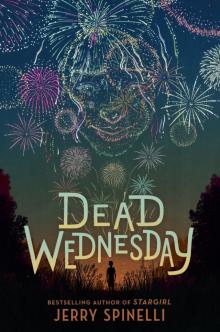 Dead Wednesday
Dead Wednesday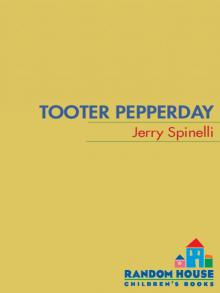 Tooter Pepperday
Tooter Pepperday